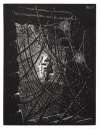Otto
Mueller
Otto Mueller, a seminal figure of German Expressionism and the Die Brücke group, is known for his evocative, simplified forms and earthy depictions of people and landscapes. If you're looking for Otto Mueller original prints and editions for sale or wish to sell, request a complimentary valuation and peruse our network's most in-demand works.
Otto Mueller art for sale
Discover Otto Mueller prints for sale, exclusively available through our private network of collectors. Explore signed and unsigned screenprints, lithographs, digital prints, and rare editioned proof prints by era-defining blue chip artists.
Sell Your Art
with Us
with Us
Join Our Network of Collectors. Buy, Sell and Track Demand
Biography
Otto Mueller, a leading figure of the German Expressionist movement, stands out for his distinctive oeuvre that explores the nuanced relationship between humans and nature. Renowned for his tender and harmonious representations of nudes in bucolic settings, Mueller's work exudes a feeling of tranquillity, atypical of the largely turbulent and emotive visual language of Expressionism.
Born in 1874 in Liebau, Silesia (now part of Poland), Mueller's journey into the arts commenced with a lithography apprenticeship, followed by academic pursuits at the Academy of Fine Arts in Dresden and later in Munich. Despite this institutional training, Mueller's artistic voice would be shaped by his encounters with avant-garde artists, marking a departure from academic conventions.
Upon joining the influential group of artists known as Die Brücke (The Bridge) in 1910 at the invitation of founding members Ernst Ludwig Kirchner and Erich Heckel, Mueller's artistic development took a decisive turn. This association heralded a period of intense creativity and experimentation, where Mueller's work began to embody the group's ethos of emotive intensity and bold colour palettes. Yet, Mueller's interpretation of Expressionism remained notably distinct in its gentle, dreamlike aesthetic.
A recurrent theme permeates Mueller’s oeuvre: the symbiosis between the human form and its natural surroundings. His idyllic scenes, often populated by Romani women and couples, radiate an aura of serene isolation, depicted through soft contours and a muted, earthy palette. These works reveal Mueller's interest in Romani culture, which correlated to the rise of Orientalism in 19th century art.
Mueller's experiences during World War I profoundly impacted his life and work. Serving on the Eastern Front, he was captured and spent time as a prisoner of war in Russia. The war's psychological toll and the direct experience of the suffering and desolation it caused are evident in his post-war works. Mueller's art became more introspective, with a darker palette and a greater emphasis on the fragility of human life. Despite the war's impact, he continued to find solace in the beauty of the human-nature connection, leaving behind an evocative and poignant body of work.
Printmaking further expanded Mueller’s exploration of human forms and natural landscapes. His lithographs, such as Sitzende In Strümpfen (1924), exhibit the same tender and harmonious qualities found in his paintings. The simplicity of lines and the delicate interplay of light and shadow in his prints reflect his mastery in capturing the essence of his subjects. These prints, often created with the same muted, earthy tones, seamlessly integrate with his larger body of work, showcasing his consistent thematic focus on the unity of human and nature.
Mueller's oeuvre reached maturation during his tenure as a professor at the Breslau Academy from 1919 until his death in 1930. It was during these final years that his work gained significant recognition, culminating in key exhibitions that solidified his status within the canon of Expressionist artists.
Despite the Nazi regime's later condemnation of Mueller's work as 'degenerate art', his legacy has endured. Today, Mueller is celebrated for his unique voice within Expressionism, with his artwork reflecting profound empathy and a deep reverence for the natural world. His harmonious compositions have secured his place as a pivotal figure in the history of Modern Art.



















